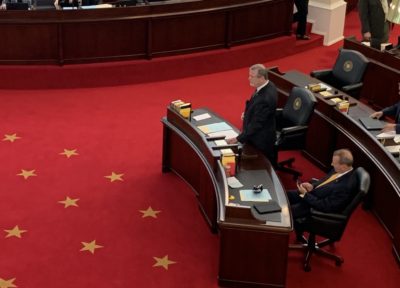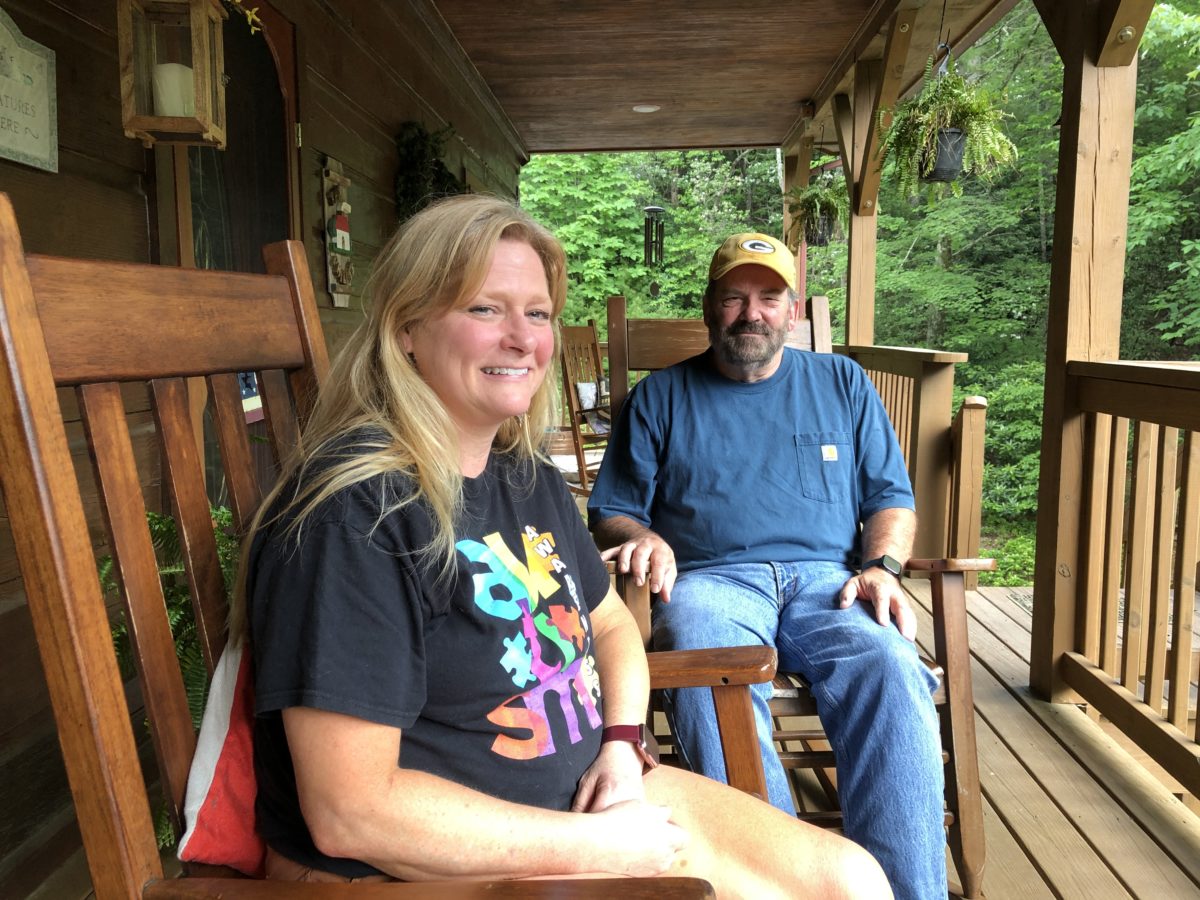

Kendra Phillips loves teaching, especially connecting with her special-needs students. But she sighs with relief that her own kids are grown now, after the chaos of last spring’s remote learning and two months preparing for virtual instruction in the new school year.
“I told my principal, I’m glad my kids are not school-aged anymore,” she said. “No one really knows how it’s going to go. I think it’s definitely going to be a learning curve for all of us. If I had enough years in, I would definitely retire.”
Phillips, who teaches exceptional children at Millers Creek Elementary, made that statement a month ago while preparing for a virtual start to the school year. She wasn’t looking forward to teaching online again. Her internet connection wasn’t reliable, and she felt disconnected from her kids even when she got online.
“We just have been so frustrated,” she said. “It’s not easy for anyone. This all landed on everybody.”
Fortunately for her, Millers Creek moved Tuesday, Sept. 8, to hybrid instruction — part in person, and part virtual. The in-person component has been a relief, she said.
Her story is a reminder that while many students, special needs kids especially, struggle to receive adequate services — some teachers are struggling, too.
Trouble connecting to the internet
Phillips teaches in Wilkes County, but she and her husband, Chuck, live in Deep Gap — a rural area in Watauga County. Most of Watauga shows up on broadband maps as a somewhat connected area — but there’s a section that isn’t. It’s Deep Gap.
When internet connection became vital to educators on March 13, Phillips felt the frustration like never before. Rebecca Mastin, principal at Millers Creek, said she didn’t have any teacher struggle the way Phillips did.
Phillips’s home office has a makeshift collection of internet connection tools. There’s the Sprint cell phone service that reaches her via a tower three miles away. She pairs her cell phone hotspot with a weBoost signal booster, which costs about $1,000, to improve the connection.

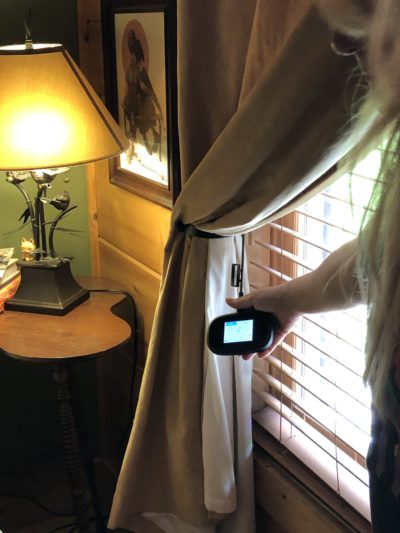

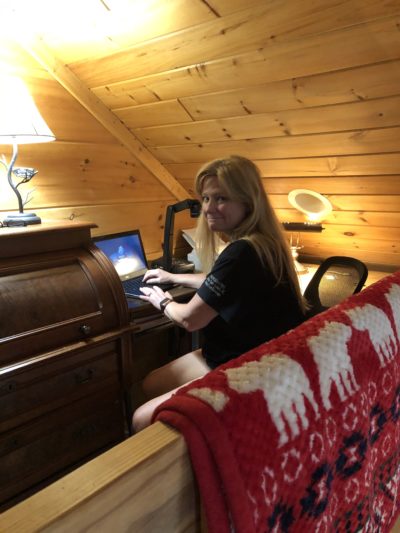
Mebane Rash/EducationNC 
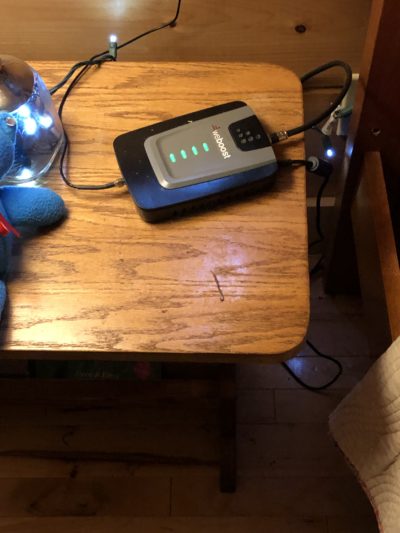
It was still slow, and she had spotty connection when learning went remote in the spring. But she was able to get by. That changed two months ago.
“Feels like everyone went remote,” she said, “and we just went to a standstill. Nothing would load.”
Even cell phone reception — never a problem before — became an issue.
Meanwhile, two of her four children were at home attending college remotely. They found themselves making trips to McDonald’s for wireless service.
Before starting this school year, Phillips said, she and her husband spent hours on the phone with various carriers, service providers and purveyors of internet boosting technologies.
“Everybody we talk to, as soon as they type in the zip code 28618, they go, ‘We got nothing,'” her husband said.
Satellite internet is available through providers such as HughesNet, but it can cost up to $500 per month. Last month a neighbor signed up for Viasat internet service. Phillips had that installed a couple of weeks ago.
She signed up for the gold package and pays $200 a month, but she says the 50-mbps download and 3-mbps upload speeds are throttled down to very slow connections during peak hours.
“From 6 a.m. to 1 p.m. are ideal times,” she said. “Trying to log on from 5 p.m. to midnight is a challenge.”
Trouble connecting to students
Aside from the internet issues, Phillips has found other connections lacking, too.
Many Individualized Education Plan (IEP) services are difficult to translate into a remote environment, but Phillips worked to find ways to offer whatever she could. Only, there wasn’t always a student on the other end to receive the services.
“Most didn’t sign on,” she said, adding the most she ever had in a group was three kids. “There’s a lot of kids that didn’t get served.”
Like her, some of her students were dealing with connectivity issues. Many logged on using cell phones.
“The most difficult part was seeing my teachers struggle with the realization that not all students had equal access to the internet or the support needed to continue learning from home,” Mastin said.
And then there were students who could connect just fine to the Zoom, but were disengaged from the learning.
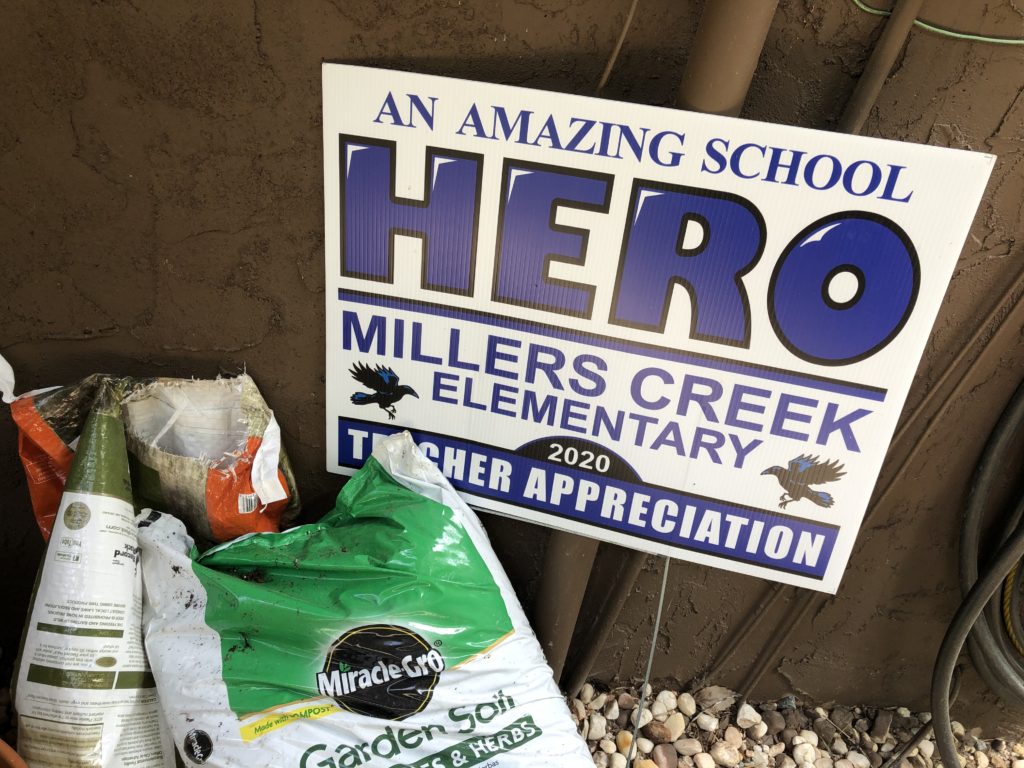

“It’s really challenging anyway when we’re face to face, usually because of focus issues with the kids,” she said. “A lot of them are on medication, and it’s really hard to keep them focused when you’re face-to-face. So on a Zoom when they don’t have that physical support right in front of them, it’s really hard.”
Once, a child was bouncing a basketball during the Zoom session. Another time, that same child was logged on while sitting on the back of a four-wheeler.
When she heard a child’s grandfather calling out in the background one day asking how long the Zoom would last, she felt the frustration build. “This is my time,” she thought.
“This is the most frustrated I’ve ever seen her,” her husband said, adding that his wife fell asleep almost every night last spring with her head in her laptop.
A challenge she takes personally
Before the pandemic, classes in such subjects as reading and math would last an hour and a half, and EC teachers could push in or pull out students for half that time.
In virtual learning — last spring and the first three weeks of this school year — those class times are already cut to half.
Meanwhile, many of the IEPs call for EC teachers to see kids in small groups 29 times over eight weeks, which works out to four times a week in 45-minute blocks.
“We were saying that we can’t justify pulling them for that 45 minutes from the full, regular ed exposure, because they are general education students first,” Phillips said.
Phillips spent almost as much time this summer worrying about virtual scheduling as she did worrying about internet. Making sure EC kids feel part of the general school population while receiving IEP services is a personal mission for her.
Her teacher journey began with her own child’s learning difference. Her oldest daughter struggled with reading, and because she was her first child, Phillips didn’t realize the extent of the struggle or that it could be a learning disability.
When Phillips’ second daughter picked up reading quickly, she realized that there was something going on with the older girl. That sparked an interest in learning differences.
Phillips took a teaching assistant job for seven years. After UNC-Charlotte offered a fast-track, tuition-paid program, she got a bachelor’s degree with a concentration in special education teaching, as well as a master’s degree.
As a parent and an educator, she says, she understands the importance of balancing breakout EC services with the social and emotional benefit of integrating EC students in the general education population. The difficulty balancing both remotely has weighed heavily on her.
A crisis averted, for now
For now, she won’t have to lose much sleep over it, since the district is bringing all kids into school buildings at least twice a week. That’s a relief for Phillips, who spent months agonizing over whether she could connect — virtually or at a human level — with her kids during remote learning.
“I will be the first to say I miss the warm body in front of me,” Phillips said. “They might drive me crazy sometimes, but I miss that being able to pat them on the back or give them a hug. There’s so much more to learning other than the textbook part of it.”
There’s something in the physical connection with others, the sounds of chatter and laughter in the hallways.
“The first day back felt like the best day ever,” Mastin said. “We had worked so hard to arrive to that point where we could see children in the hallways and hear them on the playground. It was quite emotional.”
On day four of the in-person hybrid schedule, Phillips said she felt completely reinvigorated.
“Seeing the kids face-to-face far outweighs the anxieties of COVID exposure, speaking for myself,” Phillips said. “The challenges of an internet connection coupled with the lack of participation during plan C remote made me feel very inadequate, very ineffective as an educator.”


